
B&D Drill Deconstruction
The objective of this project was to deconstruct a Black and Decker Li2000 drill and analyze key engineering design features. The main focus of the breakdown was the two stage epicyclic gear box which increases torque output from the motor to the final drive while reducing the rotational speed. I also took an in depth look at the directional switch for the motor and the manual operation option. In addition to these features, the project also involved analyzing the DFM assembly mistake proofing that ensures quick and easy assembly of the drill on the production line. Deliverables for this project included a component decomposition of the product features and engineering drawings fo the gearbox which were created using PTC Creo.
Design for Manufacturing
Assembly Mistake Proofing
The Black and Decker Li2000 incorporates the principles of mistake-proofing in several different ways in its design.
The wiring harness (figure 1) that connects the battery to the electric motor is designed in a way that facilitates proper assembly. The electrical terminals from the motor only fit inside the channels on the top and bottom ends of the wiring harness, and there is a tab on the bottom of the piece that only fits in the proper configuration. These features are examples of the mistake-proofing method of facilitation, which seeks to prevent mistakes by making assembly easier. These features also are preventative because they only allow assembly in the correct configuration.
In addition to the wiring harness, the main housing that holds the motor in place mitigates errors in assembly. The preventative measures in these two components are the two holes that secure the motor and the tab on the bottom (figure 2,3) that ensure the motor only fits correctly in one way.
The switch that controls the direction the motor spins is also designed to prevent the possibility of assembly errors because it connects to the wiring harness for the motor uniquely. The pin on the wiring harness (figure 4) has a “t” shape that only fits into the receiver on the switch (figure 5) in the correct arrangement.
Lastly, the motor is secured to the gearbox housing with a single pin that slides through both parts (figure 6,7). This is a demonstration of elimination because the design uses a single part to eliminate as much complication in the assembly as possible, mitigating the possibility of error in the manufacturing process.

Figure 1. Battery to motor wiring harness
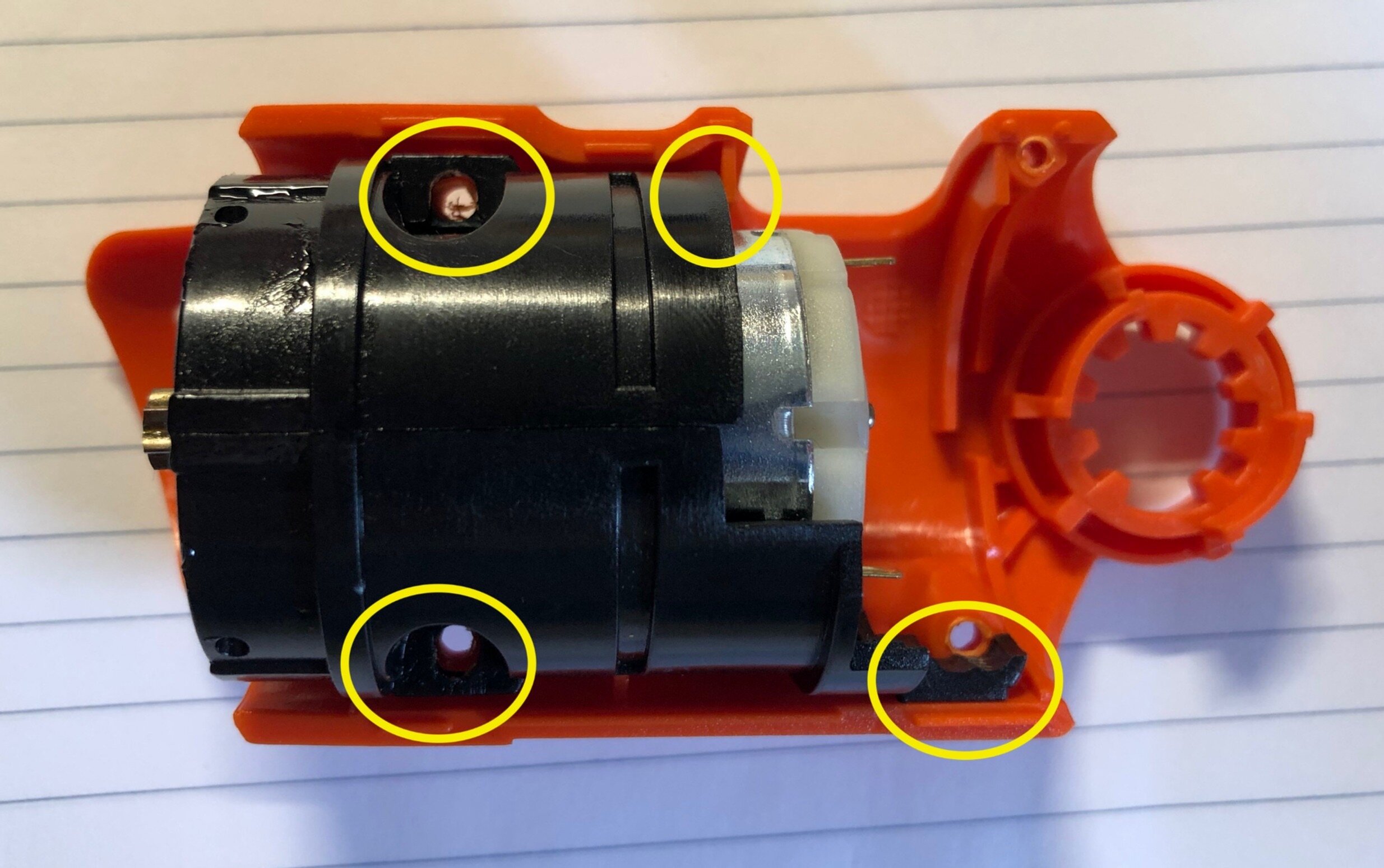
Figure 2. Main housing with motor in place
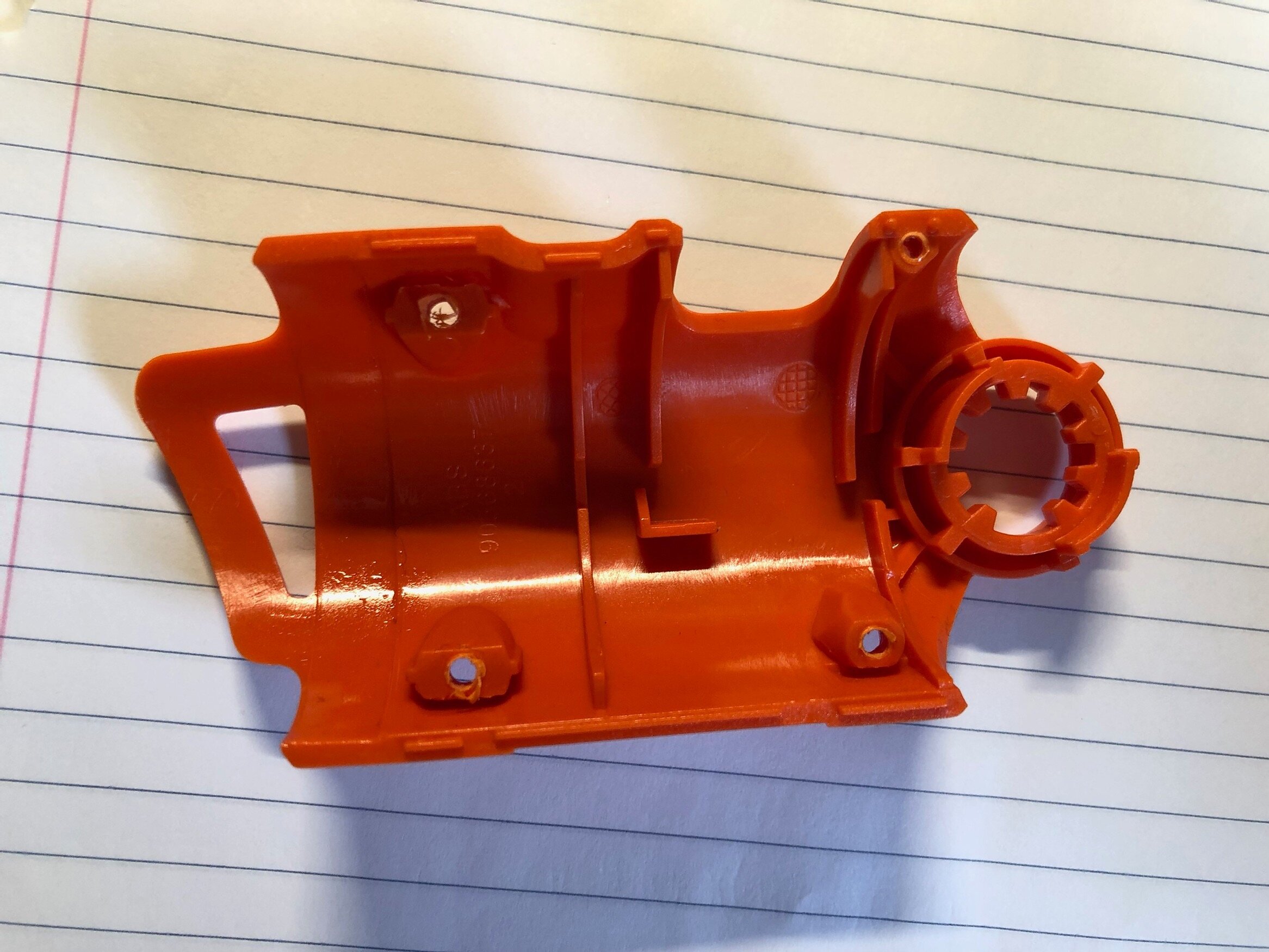
Figure 3. Main housing
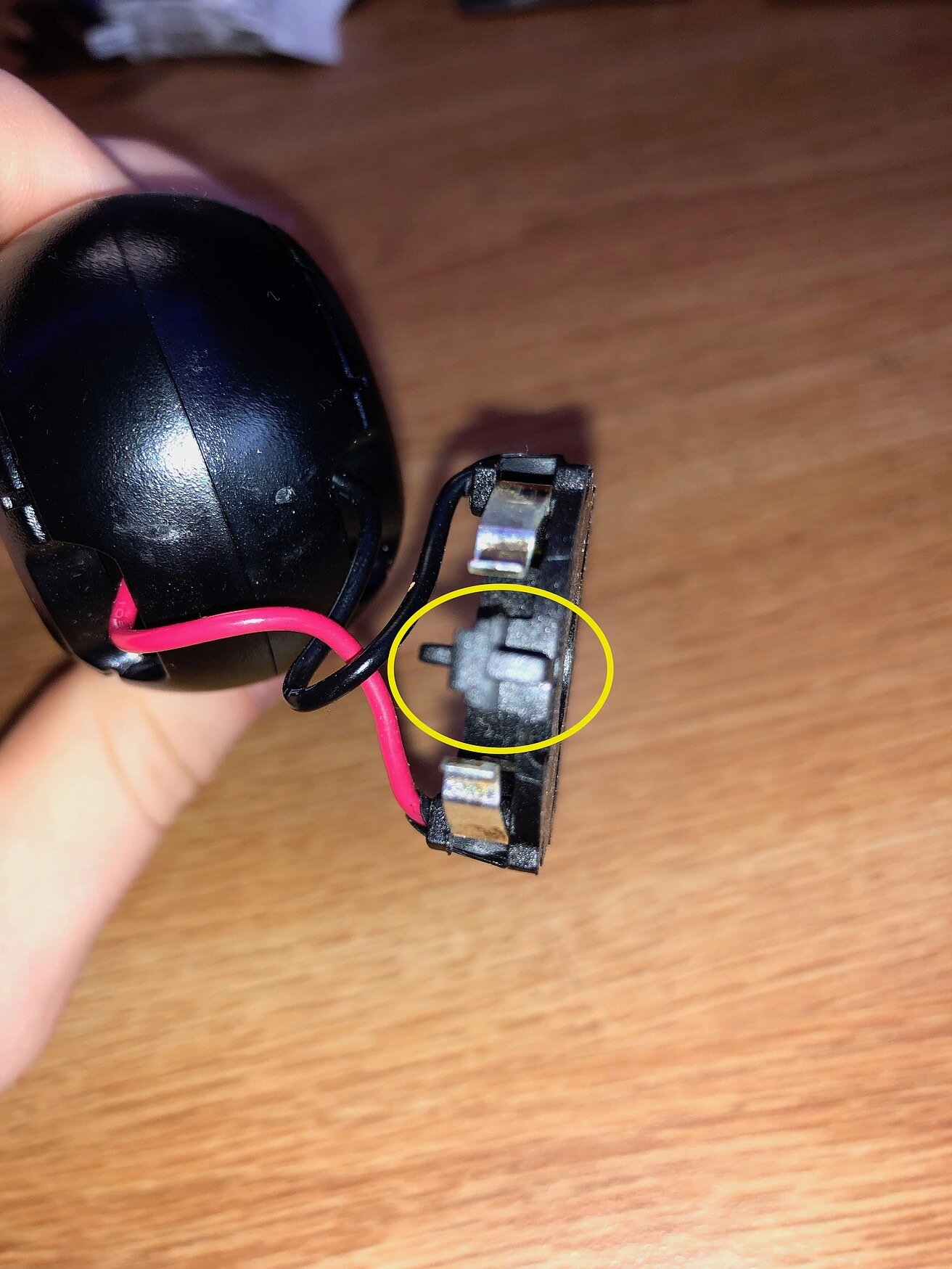
Figure 4. Wiring harness pin that connects to directional switch
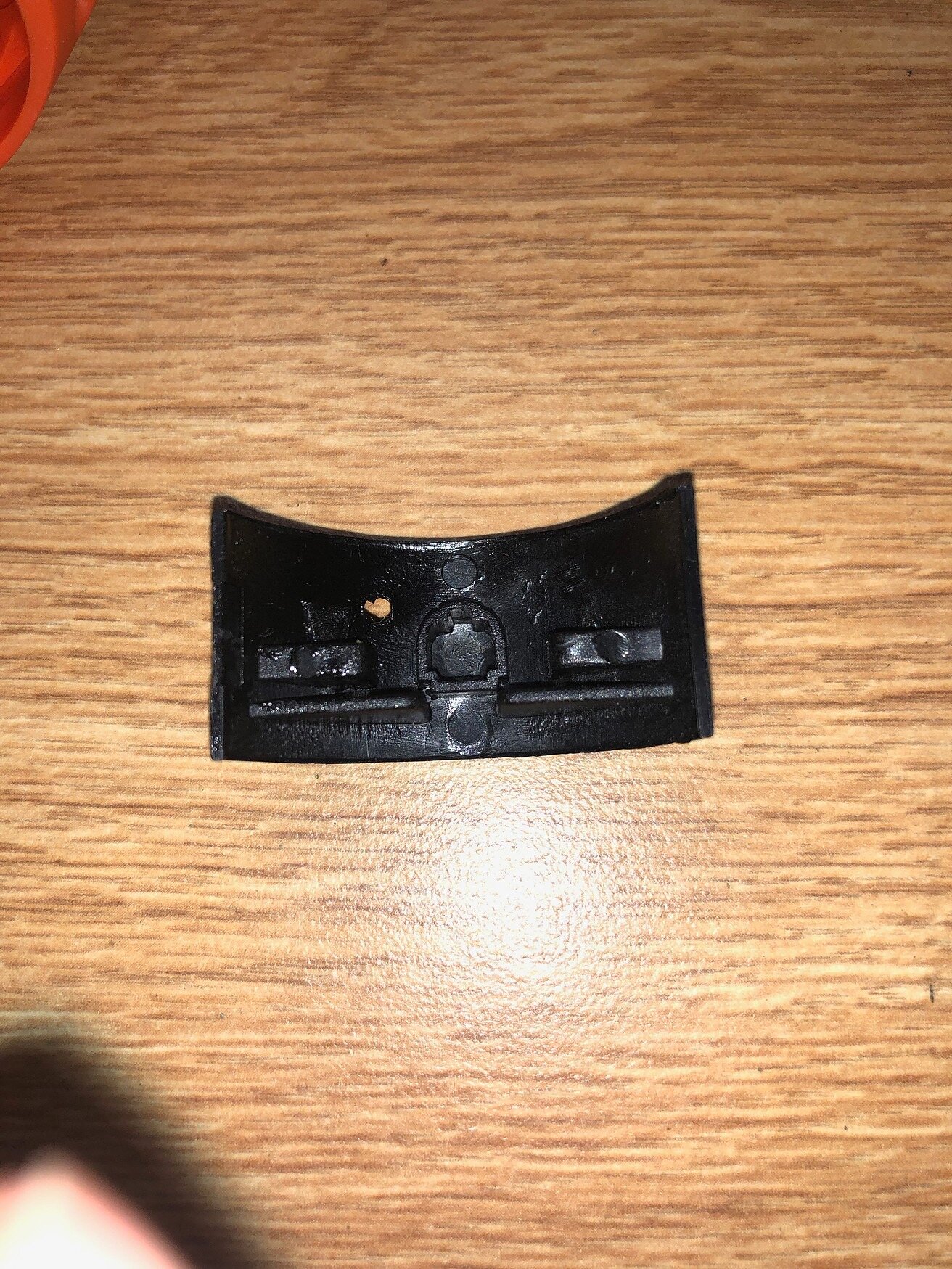
Figure 5. Underside of directional switch
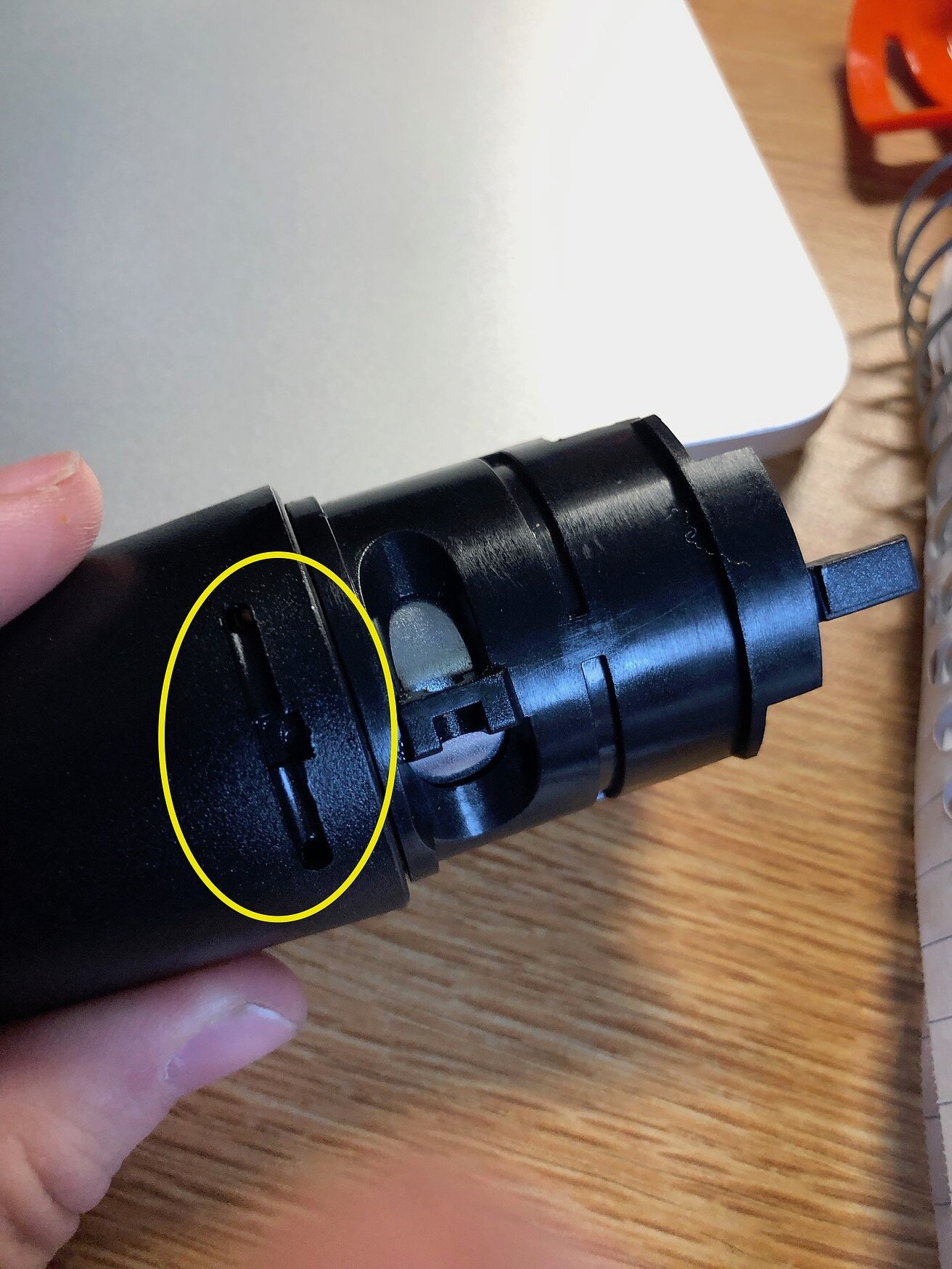
Figure 6. Top side of the motor, circled is the pin receiver
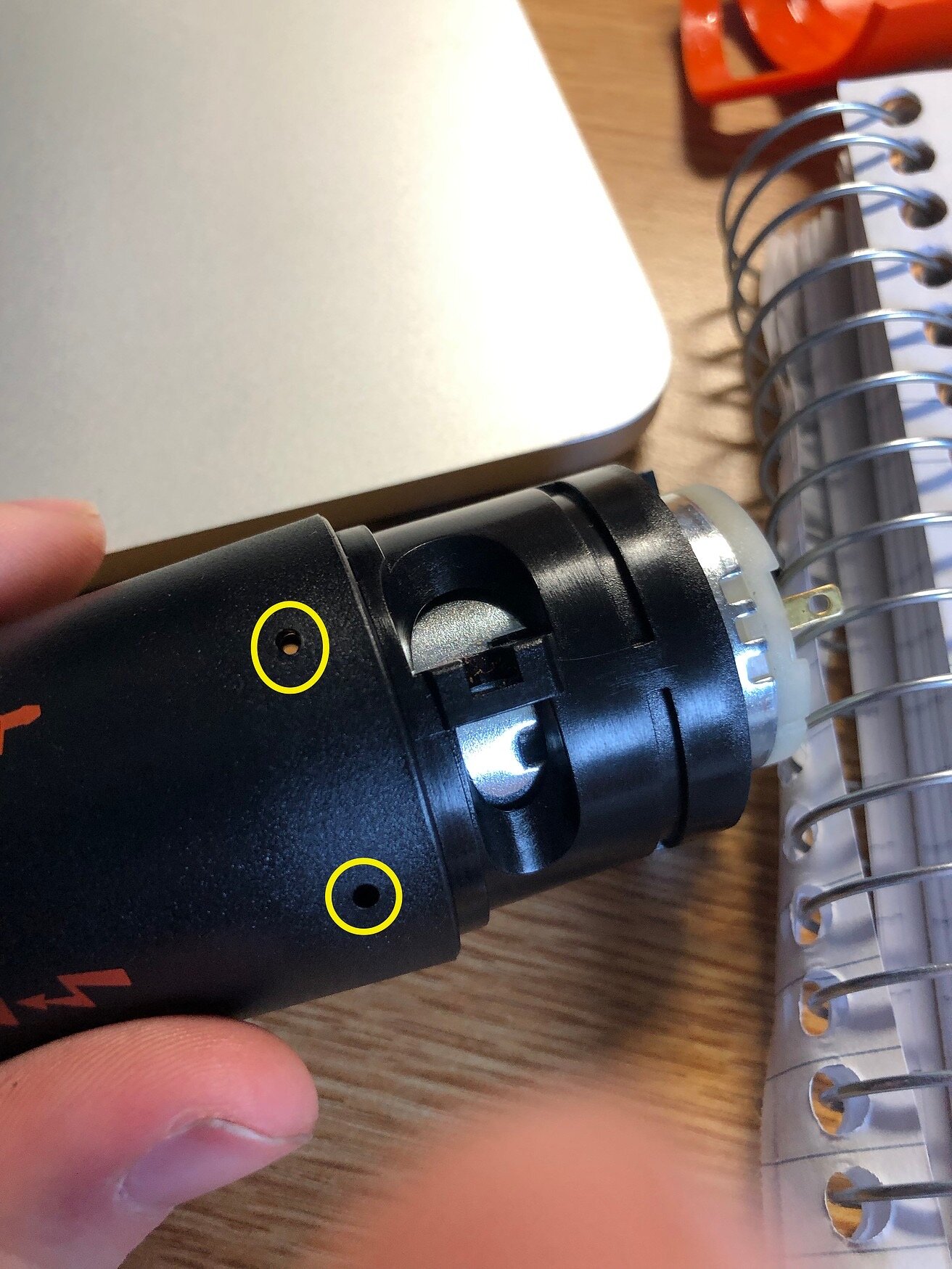
Figure 7. Back side of the pin receiver
Component breakdown of B&D Li2000
Component Analysis
An in-depth look at the finer pieces of the B&D Li2000, featuring the forward/reverse switch, the handle pivot lock, and the power/manual switch.
The Li2000 features a forward/reverse switch that changes the direction of the motor. The switch connects to the wiring harness for the motor, and it works by changing which poles the battery leads connect to. When the switch is set for forward, the positive battery lead connects to the positive pin on the motor. When the switch is moved to reverse, the battery leads are connected in reverse to the motor, which reverses the direction of current in the circuit and changes the rotational direction of the motor (figure 8,9,10).
The pivot lock that fixes the handle in position uses a pair of matching gears extruded into the handle and the body. When the pin is compressed, the cogs in the button sit clear of the cogs in the body, so they don't mesh; this allows the pieces to pivot freely. When the button is released, its cogs mesh with the cogs on the body, and the drill can no longer rotate (figure 11,12).
The power/manual option on the drill locks the output shaft in place, so the drill can be used as a screwdriver without the motor. When the end of the gearbox housing is twisted, a gear inside the housing slides between the teeth on the edge of the second planetary carrier and the teeth on the inside of the housing. These gears mesh, locking the output shaft in place (figure 13).

Figure 8. Diagram of Motor Wiring

Figure 9. Labeled drawing of switch in forward position

Figure 10. Labeled drawing of switch in reverse position

Figure 11. Pivot lock in unlock position where the gears don't mesh

Figure 12. Pivot lock in locked position–gears are meshed

Figure 13. Power/manual mode in locked position, middle gear holds output fixed in place with the ring.
Gearbox Analysis and Engineering Drawings
Gear Ratio Calculations and Pitch Diameters of Epicyclic Gear Train

Gear Ratio Calculations and Design Analysis

Pitch diameter overlay

Drawing of planet gear

Drawing of sun gear

Drawing of full gearbox assembly

Drawing of ring gear
Gear Train Animation in PTC Creo
Conclusion
Breaking down this screwdriver was a captivating use of time. The thing I found most interesting in the design was the forward reverse switch. Using the floating plastic piece to change the pin connections is really compact and simple, and it also only takes one part which reduces the amount of things that can go wrong and makes the drill more reliable. My biggest takeaway overall is that a few small design choices can greatly improve the design quality of a product. I used to mistake cheapness in a product for lack of design quality and thought, but as it seems, a product can be designed to be simple and cheap without compromising quality.
